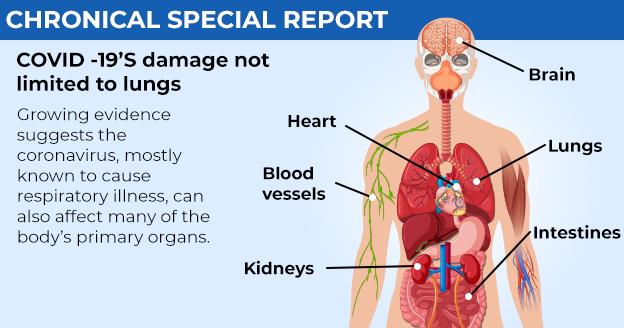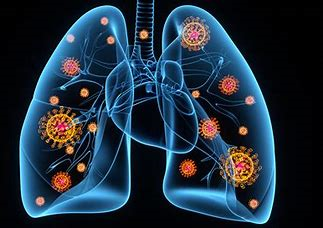Get 10% Off*, Use Code: HPDS25
Get 10% Off*, Use Code: HPDS25

The coronavirus pandemic has created some new, unanswered questions that still need to be resolved. For those who contracted the virus and have survived, what is the next step? Since the long-term effects of Covid-19 are relatively unknown, how does it affect our bodies down the road? What exactly can we do as far as exercise as we recover from our bout with coronavirus? We here at HPFY can give you some important information and guidance as you recover from Covid-19.
While the doctors and scientists have identified the symptoms of Covid-19, the long-term, lasting effects on our bodies are still relatively unknown. Many people who have recovered from bouts with coronavirus have reported experiencing lasting and possibly permanent effects from this virus. As we all know, Covid-19 or the coronavirus is a respiratory infection that affects the lungs, but we are also learning that this virus can negatively affect our hearts, blood vessels, and other of our vital organs. Since the virus affects how our body utilizes the oxygen we breathe, this can have a trickle-down effect throughout our body, including our heart. Some potential issues can include:
The Centers for Disease Control (CDC) has presented a list of underlying medical conditions that can contribute to a severe case of Covid-19.
The Journal of American College of Cardiology, at a recent review, showed evidence of heart involvement in roughly 25% of hospitalized coronavirus patients. Some centers even had 30% or higher. Other coronavirus studies have shown higher levels of enzyme levels and other potential evidence of heart damage in patients with milder cases of Covid-19. The unsettling part is that we don’t know if these effects are permanent or not. Do we need to monitor the effects on our other organs to fully understand the negative impact of Covid-19. One way to monitor your heart is with:
Eko DUO ECG+ Digital Stethoscope: This advanced stethoscope can provide unprecedented insight into cardiac function directly to your smart device. It is FDA, CE cleared, and ISO 13485 certified for clinicians to monitor the heart’s electrical activity and screen for potential arrhythmias with 60x amplification of heart and other body sounds. The Essentials Plan of this Digital stethoscope allows clinicians to record and save sounds and ECGs for further analysis or consultations for a second opinion.
For example, the NCAA has extended protocols for quarantine of their athletes who test positive due to this potential cardiac impact.


As you recover from this respiratory infection and want to start exercising to return to normal, there are some steps that may need to be taken. First and foremost, you should discuss any, repeat any, exercise routine with your doctor or pulmonologist before beginning. The first step as you can imagine is rest…lots of rest. This allows your body to recover from battling the internal infection of Covid-19. One potential avenue for recovery is vitamin D. This supplement is a fat-soluble vitamin that is especially important for immune system health, leading some to believe it may help ward off or fight a Covid-19 infection. Some research has shown that healthy levels of vitamin D can keep your immune system functioning optimally and those hospitalized with Covid-19 and had sufficient levels of vitamin D had a reduced risk of adverse outcomes and death. More studies will need to be completed before definitively knowing that vitamin D has a positive effect on coronavirus therapy or prevention. Some exercises you may want to attempt while you recover can include:
Recovering from coronavirus can be a long road. Since long-term effects are not known, anyone who recovers from this virus and decides to start exercising should do so only at their doctor's recommendation and supervision. Simple breathing exercises can lead to more strenuous activity (like walking) as you progress. Care should be taken to start slowly and not progress too quickly. As with any other type of exercise, you should stop immediately if you feel lightheaded or have any chest tightening out all. Feel better and stay safe!!
People with complicated medical conditions or the elderly are most likely to experience COVID-19 symptoms for quite a significant period; however, in most cases, the infection may cause a certain level of discomfort in the patient even after the recovery. This may be experienced for a few weeks, if not months.
Shop everything you require to combat COVID-19 in just one place. Health Products For You is a trusted online health store with a vast customer base all across the globe. HPFY understands the importance of good health and wellness, especially in such testing times of pandemic. Our COVID Supplies range includes test kits, sanitizers, face masks, and many other aids to keep your health in check within the safety of your house. Try our BinaxNOW COVID-19 Antigen Self Test Kit. It is an effective Covid Rapid Test Kit that has received FDA Emergency Use Authorization for self-testing with no need to ship the samples to a lab or wait for a prescription from a professional. You can test yourself and get the best results within a blink of an eye. Order now and get exciting deals and discounts.
Disclaimer: All content found on our website, including images, videos, infographics and text were created solely for informational purposes. Our content should never be used for the purpose of diagnosis or treatment of any medical conditions. Content shared on our websites is not meant to be used as a substitute for advice from a certified medical professional. Reliance on the information provided on our website as a basis for patient treatment is solely at your own risk. We urge all our customers to always consult a physician or a certified medical professional before trying or using a new medical product.

Kevin Cleary has been a Health Products For You contributor for many years and has a degree in marketing. His health and wellness journey has a very personal meaning and has guided him in his content writing for HPFY.
In 2006, ...
How To Increase Iron Levels Quickly
It’s a question that must have puzzled you like many others. Iron is essential in hemoglobin production and its inadequate levels can negatively impact your health. Dive into this informative article to explore top iron-rich foods that can help you fight iron deficiency.
10 Best Coccyx Cushions for Tailbone Pain
If you're like most people, you spend about 8 to 10 hours sitting every day. However unhealthy, it is part of life for many, and can cause tailbone pain. Coccyx cushions can help alleviate this pain. Click to read more and find the perfect coccyx cushion for your tailbone pain.
5+ Best Adult Diapers for Fecal Incontinence
Dealing with fecal incontinence can be challenging, but you're not alone. Read this article and navigate through discreet and effective solutions that help you manage fecal incontinence and let you live life on your terms with confidence and comfort.
Top 5 Best Reviewed Nebulizers of 2024
Need an effective and affordable nebulizer? Look no further, in this article we offer 5 of our best reviewed nebulizers that are loved by our customers. Click to read more and find the perfect nebulizer for all your respiratory needs.
10 Best Penis Pumps For Erectile Dysfunction
For anyone dealing with erectile dysfunction, penis pumps serve as a great way to manage it. But with so many products available, determining the best one for your needs can be challenging. To assist you in refining your choices and making an informed decision, here are our top 10 options, recognized for their effectiveness and safety.